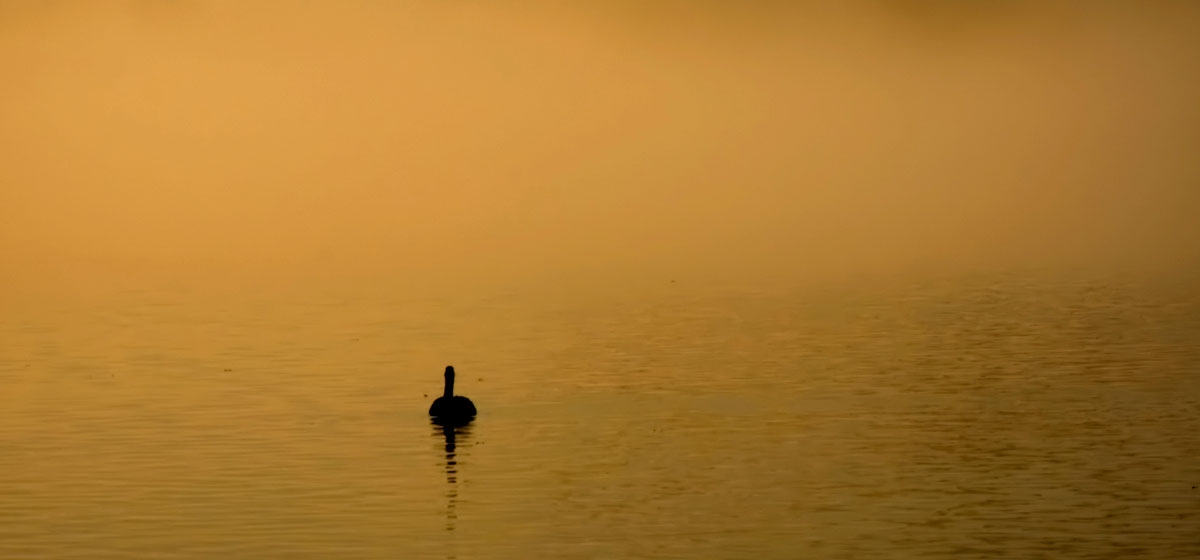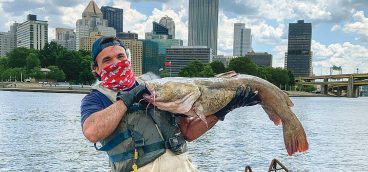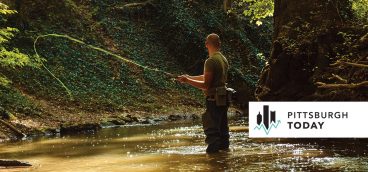Gone Fishing

At various times in a fisherman’s life, it becomes desirable to try a new spot. Perhaps an old place gets too crowded. Maybe the fish move on. Or maybe one simply wants a change of scenery. Of course, truly knowing a fishing spot means getting there early, before the fish start feeding—before the first light. In a place like downtown Pittsburgh, however, that’s not easy to do. Though the streets are deserted, you’d be surprised how light it is at 5:15 a.m. before the first hint of dawn.
One exception, however, is on the banks of the Allegheny in a narrow concrete walkway under the Fort Duquesne Bridge. It’s the kind of place one might find a troll or, after a while, feel like one. It’s also a place where the fishing’s supposed to be good.
So early one May morning, this observer dropped a line in the river under that bridge. The idea was to test the fishing at the historic piece of land where the Ohio River begins—the Point in Pittsburgh.
Good fishing spots have three things in common: there have to be fish, it can’t be crowded, and the scenery has to be interesting enough to occupy the mind for the majority of the time when the fish aren’t biting.
The Point is certainly easy to get to, but despite being at the bull’s-eye center of a metro area of 2.3 million people, you’re likely to be alone if you get there early. So alone, in fact, that you’ll want a companion—a decent-sized dog is ideal.
The first hint of natural light appears around 5:30 a.m. And the periodic noise from the cars and trucks on the bridge above is punctuated by the fish that are beginning to surface and flop. Now, casting a lure into the pattern of colored lights dancing on that dark water, you might wonder: If I catch something, what exactly will it be? What kind of creature would come out of that darkness?
As if on cue, something swims from under the concrete bank only a few feet away and into the river. Is it a mink, a rat, an otter, a snake? Too dark to tell. And too dark to stay under that bridge. Time to walk toward the Point, stopping to cast wherever a fish jumps. And the fish are surfacing regularly, 20 to 40 feet offshore.
A sudden sound from behind turns out to be the day’s first jogger, a man in his late 50s who calls out, “Morning, there.” At 5:47 a.m., the first pedestrian crosses the Fort Duquesne Bridge from the North Side. The light is coming up rapidly, and by 6 a.m., though the sun won’t rise for another 13 minutes, any mystery of darkness is gone.
Between 6 and 7 a.m., the river teems with wildlife. A seagull screeches overhead, two geese honk and alight yards offshore at the Point. They and a pair of mallards drift in the currents where the muddy, fast-flowing Monongahela mingles in a jagged, churning line with the green Allegheny.
By 8 a.m., the best fishing’s over. No luck this day, anyway. But at the tip of the Point, an observer feels he’s standing in the middle of a grand miniature railroad village. A train whistle blows as an engine rumbles along the South Side; a team of cement mixers hurry west on Carson Street past a line of barges, low with coal at their moorings along the Ohio riverbank. Like a busy spider, the incline climbs and descends Mt. Washington.
Rush hour’s in full swing, with cars and trucks streaming across the Fort Pitt Bridge to the left, the Fort Duquesne to the right and the West End Bridge straight ahead.
In Point State Park, joggers and walkers multiply. A pensive thinker perches on a park bench. Ladies in colorful sweat suits walk and talk.
And out in the river, the mallards and geese range near and far among the broad waters heading slowly downstream.





